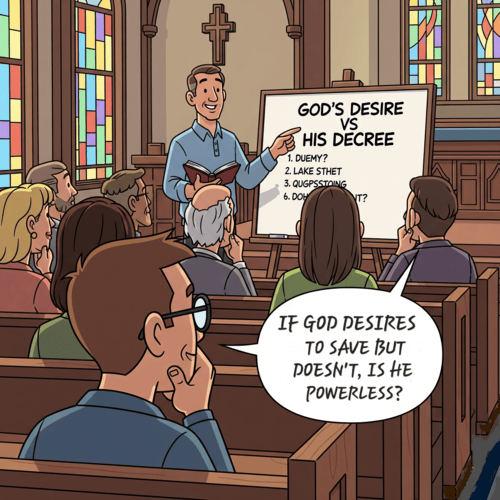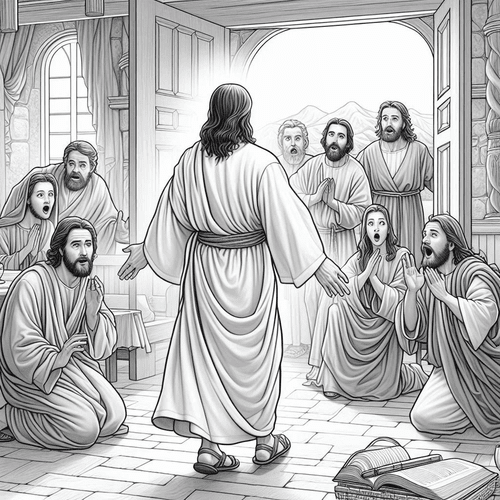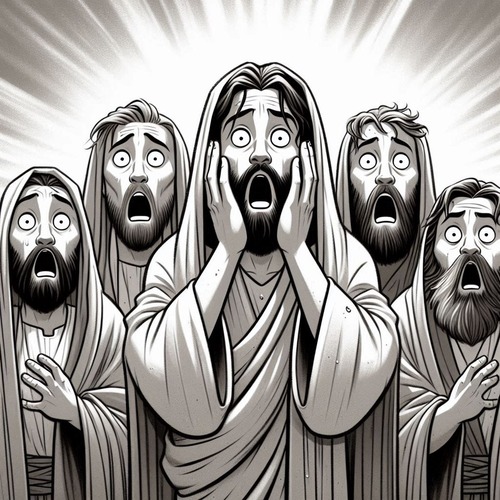The Cornerstone Metaphor and Jesus: What’s the Crucial Connection?
VITAL SALVATION LESSONS FROM THE PARABLE OF THE TENANTS (MATTHEW 21)
The Cornerstone Metaphor and Jesus: Imagine a single stone so crucial that its precise placement determines the integrity of a massive structure. A stone so vital that without it, everything would collapse, misalign, or crumble. What if our entire life—our hope, our future, our salvation—depended on recognising this one critical piece?
The cornerstone metaphor isn’t just about construction; it’s about understanding the most important relationship we’ll ever have. Jesus’ parable reveals how God pursues us, even when we’ve repeatedly missed or rejected His most important message. The story shows us what we consider insignificant can actually be the most powerful force in the universe—a truth that could change everything about how we understand God, ourselves, and our spiritual journey.
THE FATHER—HOW UNLIKE OUR BEST LANDLORDS
In Matthew 21:33-46, the landlord—representing God the Father—is nothing like the typical human property owner. Where human landlords might have quickly evicted or sought violent retribution, our divine Landlord demonstrates extraordinary patience and persistent love.
The vineyard, meticulously prepared with a winepress and watchtower, symbolises God’s comprehensive preparation for relationship. Every detail reveals divine intentionality: protective walls representing spiritual boundaries, a carefully cultivated environment designed for spiritual fruitfulness. This isn’t a passive rental arrangement but a deliberate, sacrificial investment.
The landlord’s repeated sending of servants—representing prophets throughout Israel’s history—reveals a relentless pursuit of relationship. Each messenger bears witness to God’s unwavering desire for reconciliation, despite our consistent rejection. God’s response to the way His prophets were treated foreshadows a deeper narrative of divine love confronting human rebellion.
LIKE FATHER, LIKE SON: THE ULTIMATE SELF-EMPTYING LOVE
Christ’s role in the parable represents the culmination of God’s love—a love so profound it chooses vulnerability over coercion. The son’s journey mirrors the Father’s character: knowing full well the potential for rejection, yet still choosing to come.
This isn’t a naive mission but a deliberate, strategic act of redemption. Christ comes fully aware of the potential cost, embodying a love that transforms rejection into restoration. His self-emptying demonstrates a love that precedes and transcends human response—a love that does not depend on reciprocation but initiates reconciliation.
The son’s coming represents the incarnation’s profound mystery: God entering human brokenness, risking everything to restore what was lost. It reveals a redemptive strategy that turns apparent defeat into ultimate victory.
THE TENANTS: A PICTURE OF OUR TOTAL HUMAN DEPRAVITY
The tenants’ response exposes the depths of human spiritual blindness. Their actions reveal not just resistance but active rebellion—a systematic rejection of every divine overture. Each murdered servant represents humanity’s consistent pattern of dismissing spiritual truth.
Our logic is chillingly rational from a purely human perspective: if we eliminate the son, we can claim the inheritance for ourselves. This mirrors humanity’s fundamental spiritual delusion—the belief that we can secure our own salvation, that we can manipulate divine purposes to suit our interests.
The tenants represent more than historical characters; they’re a mirror reflecting our collective inability to see what’s good for ourselves, our tendency to reject grace, to misunderstand divine intent, to prioritise self-interest over spiritual truth.
THE CORNERSTONE METAPHOR: GOD’S REDEMPTIVE PLAN
In the parable’s climax, the rejected stone becomes the cornerstone—a powerful metaphor of divine reversal. What humanity dismisses, God elevates. The very mechanism of rejection becomes the foundation of redemption.
This cornerstone metaphor demonstrates how God’s redemptive plan transcends human resistance. Rejection does not derail divine purpose; instead, it becomes the very instrument of salvation. The stone rejected by builders becomes the most crucial element of spiritual construction.
The theological implications are profound: salvation is not contingent on human recognition but on divine sovereignty. God’s plan moves forward, with or without human cooperation, ensuring that humanity remains “without excuse” on judgement day.
THE PROPHETIC QUESTION: A MIRROR OF SPIRITUAL TRUTH
Jesus’ question to the religious leaders is a powerful trap. By asking them what the landlord should do to such terrible tenants, He cleverly leads them to pronounce their own judgement. Just as the prophet Nathan once confronted King David with a story that made David recognise his own sin, Jesus uses this parable to make the religious leaders see their own spiritual failure. They don’t realise that in answering His question, they’re actually condemning themselves.
The irony in the moment is perhaps in how Jesus exposes spiritual truth through a simple question. The leaders, thinking they’re judging the wicked tenants in the story, are actually revealing their own hearts. Their swift declaration that the tenants should be destroyed and the vineyard given to more faithful workers becomes a prophecy about their own spiritual condition. Without knowing it, they pronounce God’s judgement on themselves for their own rejection of God’s messengers and ultimately, of His own Son.
CONCLUSION: THE CORNERSTONE METAPHOR AND JESUS
The parable of the tenants reveals the heart of the cornerstone metaphor: God’s relentless love in the face of repeated rejection. Just as the landlord continued to pursue relationship despite murderous tenants, Christ came knowing full well the cost, offering salvation to those who’d consistently turned away. His sacrifice transforms rejection into redemption, turning the very stone dismissed by builders into the most crucial foundation of spiritual hope.
This cornerstone—Jesus Christ—stands as a testament to divine patience and sovereign grace. He invites us not as conquered subjects, but as beloved participants in a redemptive plan that transcends human understanding. The metaphor challenges us to recognise that our perceived wisdom often misses the most important spiritual truths, and that God’s architectural design is infinitely more profound than our limited human perspective.
Make no mistake: how we respond to this cornerstone will determine not just our understanding of Scripture, but the very trajectory of our eternal destiny.
THE CORNERSTONE METAPHOR AND JESUS: RELATED FAQs
What exactly is a cornerstone in the biblical context? A cornerstone is the primary foundational stone that determines the alignment and stability of an entire building. In biblical imagery, it represents Christ as the essential, divinely-appointed foundation of spiritual life, providing structural integrity to believers’ faith and God’s redemptive plan.
- Why did religious leaders reject Jesus as the cornerstone? Religious leaders rejected Jesus because He challenged their established theological frameworks and power structures. They expected a militaristic Messiah, not a humble servant who critiqued their spiritual legalism and offered a radical, grace-based relationship with God.
- What does it mean that believers are “living stones”? Believers are described as living stones built upon Christ, the ultimate cornerstone. This metaphor suggests that Christians are actively integrated into God’s spiritual structure, deriving purpose, strength, and alignment from Christ, while participating dynamically in His redemptive mission.
Why does God continue to offer salvation despite our repeated rejection? God’s persistent offer of salvation reveals His sovereign grace and electing love. Despite humanity’s consistent rebellion, divine mercy continues to extend an invitation, not because of human worthiness, but because of God’s unchanging character. This demonstrates that salvation originates in God’s will, not human merit.
- How does this parable demonstrate God’s sovereignty in salvation? The parable powerfully illustrates that God’s redemptive plan cannot be thwarted by human resistance. Each rejected messenger and the ultimate sending of the Son reveal a predetermined divine strategy that transcends human decision, emphasising that salvation is initiated, sustained, and completed by God alone.
- What does this parable teach about human spiritual blindness? The tenants’ repeated rejection of the landlord’s representatives exposes the profound spiritual ignorance inherent in fallen humanity. Humans consistently misunderstand divine intentions, prioritizing self-interest over spiritual truth, thereby demonstrating our total depravity and need for transformative grace.
How does Nathan’s confrontation of David in 2 Samuel 12 parallel Jesus’ parable in Matthew 21? In both Nathan’s confrontation and Jesus’ parable, the listener is led to condemn themselves through a carefully constructed story. In Nathan’s case, he tells David a story of injustice that provokes the king’s moral outrage, only to reveal that David himself is the unjust man. Similarly, Jesus’ parable causes the religious leaders to pronounce judgement on themselves, unwittingly confirming their own spiritual condemnation. These prophetic moments demonstrate God’s extraordinary method of revealing truth—not through external condemnation, but by allowing individuals to recognise their own culpability and spiritual blindness through a narrative.
Editor's Pick

Will We Remember This Life in Heaven? What Isaiah 65:17 Means
"Will I remember my spouse in heaven? My children? Will the joy we shared on earth matter in eternity?" These [...]

From Empty to Overflow: The Abundant Life Jesus Promised
(AND WHY YOU SHOULDN’T SETTLE FOR LESS) We're surviving, but are we thriving? If we're honest, there's a gap between [...]

What Does Jesus Save Us From?
THREE BIBLE TRUTHS ABOUT SALVATION "Jesus saves." We’ve seen it on bumper stickers, heard it shouted at sporting events, maybe [...]

If God Wants Everyone Saved, Why Aren’t They?
THE REFORMED VIEW ON GOD’S DESIRE VS HIS DECREE The question haunts every believer who has lost an unbelieving loved [...]

The One Man Mystery in Acts 17:26: Is It Adam Or Noah?
When the Apostle Paul stood before the philosophers at Mars Hill, he delivered an insightful statement about human unity: “And [...]

Megiddo Or Jerusalem: Where Did King Josiah Die?
Recent archaeological discoveries at Tel Megiddo continue to reveal evidence of Egyptian military presence during the late 7th century BC, [...]

Losing Your Life Vs Wasting It: How Are the Two Different?
AND WHY DID JESUS PRAISE THE FORMER? Jesus spoke one of the most perplexing statements in Scripture: “For whoever wants [...]

Can Christians Be Demon Possessed? What the Bible Teaches
Perhaps you’ve witnessed disturbing behavior in a professing Christian, or you’ve struggled with persistent sin and wondered if something darker [...]

Sacred Fury: What Christ’s Temple Cleansing Truly Means
Mark 11 records the crack of a handmade whip that echoed through the temple corridors. Tables crashed to the ground, [...]

Did Jesus Cleanse the Temple Twice?
OR DID JOHN DISAGREE WITH THE SYNOPTICS ON TIMING? One of sceptics’ favourite "gotcha" questions targets what they see as [...]
SUPPORT US:
Feel the Holy Spirit's gentle nudge to partner with us?
Donate Online:
Account Name: TRUTHS TO DIE FOR FOUNDATION
Account Number: 10243565459
Bank IFSC: IDFB0043391
Bank Name: IDFC FIRST BANK






